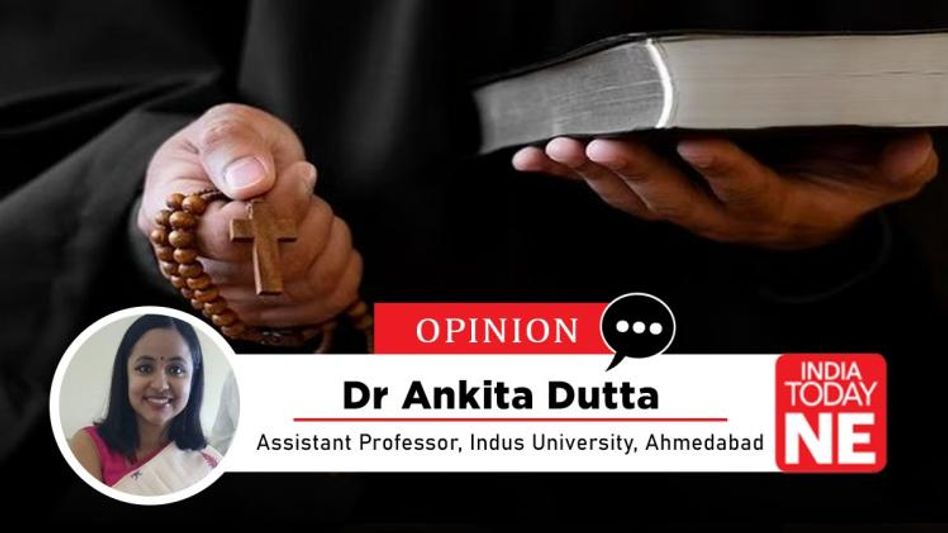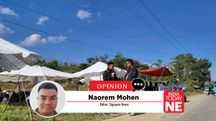Assam in the Grip of Evangelism?
The entire region of Upper Assam, bordering the Catholic Christian-dominated states of Nagaland and Arunachal Pradesh, has always been a hotbed for missionary activities.
 Assam in the Grip of Evangelism?
Assam in the Grip of Evangelism?The recent news of three Swedish nationals, including two women, being detained by the Assam Police for violation of tourist visa rules, again drew our attention to a silent danger that is spreading its wings in almost every corner of Assam, especially Upper Assam.
It was later reported that the tourists were picked up from a religious “prayer meeting” organised by the United Church Forum (an apex body of around 12 different Churches) in Naharkatia, Dibrugarh district.
Just a few days before this incident, a Shiva temple was vandalised in Dibrugarh’s Chabua locality – a region where Christian conversions have become rampant of late. Quite expectedly, the local people of the area later alleged that fuelled by post-conversion radicalisation among the neo-converts, incidents like these have become very common in the area.
The entire region of Upper Assam, bordering the Catholic Christian-dominated states of Nagaland and Arunachal Pradesh, has always been a hotbed for missionary activities. Evangelists such as Ranjan Chutiya claim to cure life-threatening diseases through miraculous prayers. But, perhaps the most dangerous of all is the use of religious songs and musical instruments associated with the Mahapurusiya Naam-Dharma tradition of Srimanta Sankardeva to spread a foreign faith among the gullible natives.
As per the Census data of 2011, of the 2.78 crore Christian population of India, 78 lakh alone are settled in the North-East. Assam had acquired a significant Christian presence by 1901. These early Christians mostly belonged to the migrant communities who were brought by the British from the present-day Chhotanagpur plateau region and settled in the tea plantations of Upper Assam. It was during the 2nd half of the 20th century that Christianity widened its reach in Assam and gradually began to spread among several Vanavasi communities of the region.
Proselytisation has been taking place in Assam through four different Pastorates/Administrative Divisions located in Guwahati (Lower Assam), Tezpur (Middle Assam and the North bank), Dibrugarh (Upper Assam), and Barak Valley (Silchar). They are a part of the Assam Mission Field (AMF) that operates from the Mizo Presbyterian Church compound located on KC Das Road, Satribari, Guwahati.
The Mizoram Presbyterian Church (Mizoram Synod) was formed with the chief objective of completing the unfinished task of proselytising Assam, seen as the last Hindu bastion of the Northeast. Its chief functionaries are mostly from the Mizo and Hmar communities of Mizoram. As per a report published by the Institute for Conflict Research and Resolution in July 2022, the different Mission Stations/Field Offices of the AMF across the four Pastorates are generally disguised as “charitable” or “social service” organisations, e.g. Churches, missionary schools, and other administrative offices.
These are operated through a network of agents, who mostly happen to be newly-inducted first-generation local converts who are always placed lower in the hierarchy. They are supervised by Mizo officials designated as Field Secretaries who are well-trained in the Missionary Training College, Aizawl to read, write and speak fluent Assamese before they are posted to their respective Pastorates in Assam. For spreading the message of the Gospel, agents for different communities (e.g. tea garden labourers, Nepalis, Hindu Bengalis, etc.) have also been specifically designated as a part of the AMF.
Identification of local communities/individuals within their Mission Stations based on certain specific parameters for the purpose of conversion takes place through vulnerability mapping. The main idea behind this exercise is to determine the different categories of population who are vulnerable to conversions, e.g. families devastated by natural disasters, economic or medical catastrophes, and underdeveloped/remote localities.
In fact, for quite a long period of time in the past, the Upper Assam and East Arunachal Mission Field were merged with the AMF which was then a very large Field for one Field Director to supervise alone. It was on April 7, 2017, that a new Mission Field named Upper Assam and East Arunachal Mission Field with the Dibrugarh district of Upper Assam as its headquarters was separately created through the adoption of a resolution by the General Missions Board. The area and jurisdiction of each pastor and as well as the posting of missionaries are carefully and systematically marked.
In today’s date, the share of Christians in the districts of Karbi Anglong and Dima Hasao, and in some of the Bodo-dominated districts too, such as Kokrajhar and Udalguri, is much higher. Christianity is one of the fastest-growing religions in Assam today after Islam. Dima Hasao district accounts for the largest population of Christians (30%) followed by Karbi Anglong (16.5%). The fact that conversion to Christianity has been one of the stratagems of the Naga insurgent group NSCN (IM) to achieve its territorial ambition of establishing a ‘Greater Nagalim’ is no longer a secret.
With this objective in mind, the NSCN (IM) has been expanding its militant-cum-evangelical activities for the past several years beyond the borders of Nagaland, including the Zeme Naga-dominated districts of Dima Hasao in Assam, particularly the Jatinga Valley, Barail hills, Haflong, Mahur, and Maibong. This region also has significant geo-political importance from strategic and security points of view. It provides a safe corridor for the extremist groups of Nagaland and Manipur to reach Bangladesh.
Religious conversions pose a direct threat to the country’s national security. A very well-planned demographic shift is already being executed along the boundaries of Bharat at the behest of several Breaking-India forces. The geopolitically sensitive border regions of our country (e.g. Punjab, North-East India) and as well as the strategically-located coastal areas have always been on the potential radar of missionaries.
(The writer is currently associated as an Assistant Professor at the Center for Indic Studies under the Indus Institute of Special Studies, Indus University, Ahmedabad).
Copyright©2025 Living Media India Limited. For reprint rights: Syndications Today









